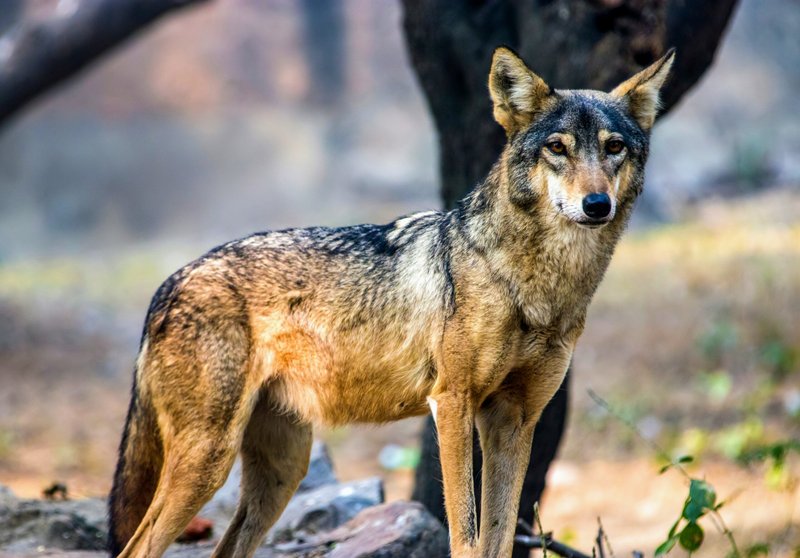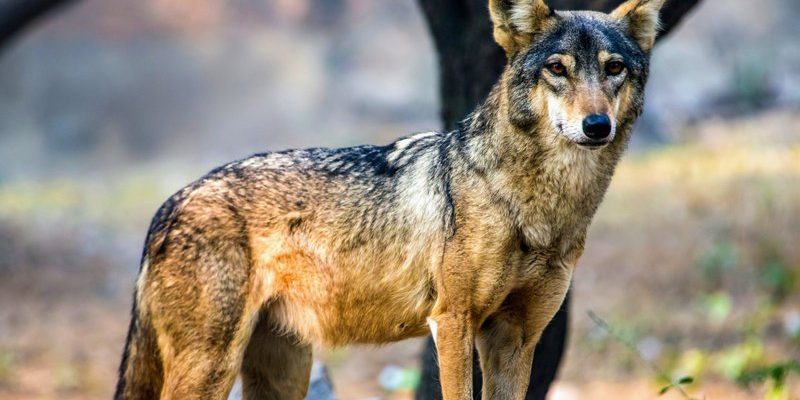
The Indian Wolf is a fascinating creature, often floating in the shadows of larger carnivores like tigers and leopards. If you’ve ever found yourself in a dense Indian forest or the rugged terrains of the Deccan Plateau, you might feel a sense of mystery surrounding these wolves. They embody the spirit of the wild, weaving through their environment with agility and grace. But there’s much more to these animals than meets the eye. Let’s delve deeper into what makes the Indian Wolf so unique.
With their slender bodies and unique adaptations, Indian Wolves are not just transient figures in their ecosystem; they play a pivotal role in maintaining the balance of their habitats. You might be surprised to learn that Indian Wolves possess a set of skills that help them thrive in the arid landscapes of India. Understanding their behaviors, their habitats, and their challenges can paint a clearer picture of how they survive in such a vibrant yet competitive environment.
Physical Characteristics
Indian Wolves have distinct physical traits that set them apart from their cousins around the world. Typically, these wolves are smaller than the average gray wolf, with an average height of about 26 to 32 inches at the shoulder. Their fur is generally a mix of brown, gray, and white, which helps them blend seamlessly into their surroundings, a clever adaptation for both hunting and evading predators.
One of the most striking features of the Indian Wolf is their long legs, which enable them to move swiftly across varied terrain. Imagine watching them sprint across a sunlit landscape; their agility is a testament to their evolved form. Their narrow, elongated snouts are perfectly designed for hunting small to medium-sized prey, giving them an edge in their natural habitat.
Another interesting aspect is their captivating eyes, which are amber in color, reflecting their keen sense of awareness and intelligence. These eyes are not just for show; they enhance their night vision, allowing them to hunt effectively after dusk when many of their prey are active. The combination of these traits showcases how the Indian Wolf is precisely adapted to its environment.
Habitat and Distribution
The Indian Wolf primarily roams across the Indian subcontinent, favoring regions that offer both open grasslands and forest fringes. You can spot them in areas like the Gir Forest in Gujarat, the scrublands of Rajasthan, and parts of the Deccan Plateau. Their habitats are usually sparsely vegetated, which allows them to maintain a low profile while stalking their prey.
What’s remarkable about Indian Wolves is their adaptability. Unlike some species that are very particular about their living conditions, Indian Wolves can thrive in a range of habitats—from dry scrublands to more verdant areas. This flexibility allows them to adjust to changing environmental conditions, which is crucial in a world where human activity is continually encroaching on wildlife territories.
With an estimated population concentrated in certain regions, the Indian Wolf is classified as a vulnerable species. Habitat loss due to agriculture and urban development presents a significant threat to their distribution. But despite these challenges, pockets of Indian Wolves continue to thrive, often forming small packs that work together to hunt and protect their territory.
Diet and Hunting Behavior
You might be wondering, what do Indian Wolves eat? Their diet is quite varied, mainly consisting of small to medium-sized ungulates like deer, wild boar, and even livestock when they venture closer to human settlements. Indian Wolves are opportunistic hunters, which means they’ll take advantage of whatever food source is readily available.
Hunting usually occurs in packs, and these wolves are strategic hunters. They employ teamwork, much like a well-coordinated sports team, to chase down their prey. They often engage in a behavior called “flanking,” where some members chase the prey while others position themselves to cut off escape routes. This communal approach not only boosts their chances of making a kill but also strengthens social bonds within the pack.
Interestingly, Indian Wolves are also known to scavenge when the opportunity arises. They will take advantage of carcasses left by larger predators, showcasing their ability to adapt and thrive under various circumstances. This scavenging behavior is crucial for survival, especially during lean times when active hunting may not yield results.
Social Structure and Behavior
The social structure of Indian Wolf packs is particularly intriguing. Typically, a pack consists of a breeding pair and their offspring, which can range from just a few to a dozen wolves. This family-oriented structure is vital for their survival, as it allows for shared responsibilities in hunting and raising young. You can think of it as a close-knit family unit working together to navigate the challenges of the wild.
Communication among pack members is essential for maintaining harmony and coordination. Indian Wolves use a variety of vocalizations, including howls, growls, and yips, to convey messages. These vocalizations help them keep track of each other, especially when hunting or marking territory. You might be enchanted by the mournful sound of their howls, which echo through the night—an integral part of their interaction within the pack and with neighboring groups.
Another fascinating aspect is their territorial behavior. Indian Wolves are known to defend their territory against intruding wolves, which often leads to vocal displays and sometimes even physical confrontations. They mark their territory with scents, ensuring that others know they’re not to be trifled with, making them not just predators but also strong custodians of their domain.
Conservation Status
The plight of the Indian Wolf is becoming increasingly urgent. Classified as vulnerable, these wolves face numerous challenges, primarily due to habitat destruction caused by human activities. As agriculture expands and urban areas encroach on their natural habitats, Indian Wolves are often forced into smaller and smaller territories, leading to increased human-wildlife conflicts.
Illegal hunting is another pressing threat, as these wolves are sometimes targeted due to misconceptions about their behavior and role in the ecosystem. Conservation efforts are crucial to ensure their survival. This includes habitat protection initiatives, public awareness campaigns to reduce human-wildlife conflict, and involvement of local communities in conservation efforts.
Organizations dedicated to wildlife conservation are working tirelessly to monitor and protect the remaining populations of Indian Wolves. You can play a part too—supporting local wildlife conservation programs or simply spreading awareness about these intriguing animals can contribute to their survival. Remember, every little bit counts when it comes to preserving biodiversity.
Interesting Facts about Indian Wolves
| Size: | 26 to 32 inches tall at the shoulder |
| Weight: | Approximately 50-80 pounds |
| Life Span: | 10-15 years in the wild |
| Diet: | Small to medium-sized ungulates, carrion |
| Social Structure: | Pack living, typically a family unit |
| Habitat: | Grasslands, scrublands, and forests of the Indian subcontinent |
| Conservation Status: | Vulnerable |
The Indian Wolf is a remarkable creature that embodies strength, adaptability, and the complexities of the wild. While they play a vital role in their ecosystems, their survival is threatened by human activities and environmental changes. By learning more about these wolves and supporting conservation efforts, we can help ensure that they continue to roam the landscapes of India for generations to come.
FAQ
What is the primary habitat of the Indian Wolf?
The Indian Wolf typically inhabits open grasslands, scrublands, and occasionally forested areas across the Indian subcontinent. They prefer regions that provide a mix of hunting grounds and shelter, often found in parts of Gujarat, Rajasthan, and the Deccan Plateau.
How do Indian Wolves communicate?
Indian Wolves communicate through various vocalizations, including howls, growls, and barks. These sounds help them coordinate while hunting and maintain social bonds within the pack. They also mark their territory using scent markings to convey their presence to other wolves.
What do Indian Wolves eat?
These wolves are opportunistic feeders, primarily preying on small to medium-sized ungulates such as deer and wild boar. They are also known to scavenge, taking advantage of carcasses left by larger predators, which is essential for their survival, especially in lean times.
Are Indian Wolves social animals?
Yes, Indian Wolves are highly social animals. They typically live in packs that consist of a breeding pair and their offspring. This social structure allows them to share responsibilities, including hunting and raising young, and enhances their survival chances in the wild.
What threats do Indian Wolves face?
Indian Wolves face several threats, primarily habitat destruction due to human encroachment, agriculture, and illegal hunting. These factors have led to their classification as a vulnerable species, making conservation efforts critical for their survival.
How long do Indian Wolves live in the wild?
In the wild, Indian Wolves typically live for about 10 to 15 years. However, their lifespan can be affected by various factors, including environmental conditions, availability of food, and threats from humans or other predators.
Can Indian Wolves adapt to changing environments?
Indian Wolves are remarkably adaptable. They can thrive in various habitats, from dry scrublands to more lush areas, depending on food availability. Their ability to adjust hunting strategies and social behaviors helps them survive in changing environments.
What role do Indian Wolves play in their ecosystem?
Indian Wolves play a crucial role in their ecosystem by regulating prey populations and maintaining the balance within their habitats. Their hunting activities help keep the populations of herbivores in check, which in turn supports the health of plant communities.
How can people help conserve Indian Wolves?
You can help conserve Indian Wolves by supporting wildlife protection organizations, participating in awareness campaigns, and advocating for the preservation of their natural habitats. Educating others about the importance of these wolves also contributes to their conservation.
Are Indian Wolves solitary hunters?
No, Indian Wolves are not solitary hunters. They typically hunt in packs, using teamwork and coordination to improve their chances of catching prey. This social hunting strategy is essential for their survival, especially when targeting larger animals.
What are the main differences between Indian Wolves and Gray Wolves?
Indian Wolves are generally smaller and have different fur coloration compared to Gray Wolves. While Gray Wolves are found in a broader range of environments, Indian Wolves are specifically adapted to the conditions of the Indian subcontinent. Their social structures, diets, and hunting behaviors can also vary significantly.

